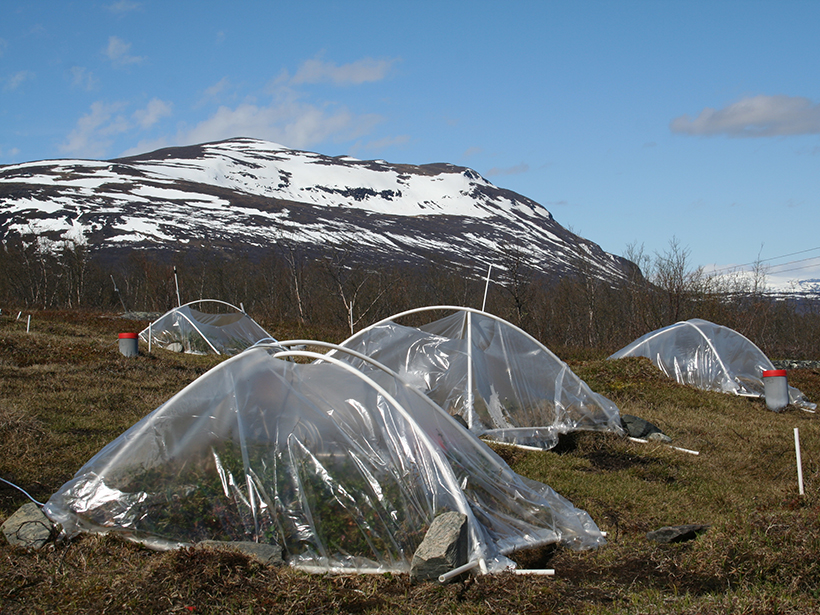Source: Journal of Geophysical Research: Biogeosciences
Just as humans breathe in oxygen and exhale carbon dioxide, plants and soil release chemical compounds of their own: biogenic volatile organic compounds (BVOCs). In the atmosphere, BVOCs react with nitrogen to form tropospheric ozone, which is also known as “bad” ozone because it pollutes the air that humans breathe. In addition to harming human health, tropospheric ozone is damaging to forests and crops and can deteriorate rubber, nylon, and other materials.
However, in areas where there are low to no nitrogen emissions, such as the Arctic, BVOCs will react with other chemicals in a more positive way. Some of these reactions can actually help mitigate climate change by forming tiny particles known as aerosols, which scatter sunlight, and increasing cloud cover, which promotes cooling.
Of all the BVOCs emitted each year, about 70% are a chemical compound called isoprene, and about 11% are chemical compounds called monoterpenes. Because these compounds are largely dependent on light and especially temperature, BVOC production and emissions are expected to increase as the planet continues to warm in coming decades. Global temperatures are likely to rise more than 2°C by 2100. This could double BVOCs’ global contribution of carbon to the atmosphere.
In Arctic and sub-Arctic regions, where temperatures are expected to increase at double the global rate, it is all the more important to study local BVOC emissions and how they might react to warming conditions. In the past, temperature increases of 2°C (or less) are known to have triggered dramatic BVOC increases in these regions.
Here Tang et al. evaluate the time that it would take for a temperature increase of that scale to have a noticeable impact on BVOC emissions in the sub-Arctic. The team of researchers conducted their experiment on a wet heath in Abisko, Sweden. They set up specialized measurements to follow BVOC emissions and carbon dioxide exchange in vegetation communities, enclosed in plastic structures that warm their environment (known as open-top chambers) for 13 years.
After just 3 years in the chambers, with a 1°C–2°C temperature increase, isoprene emissions had increased by about sixfold, the researchers found, and monoterpenes had increased by about fourfold. The warmer weather likely led to an increase in the amount of vegetation and diversity of plant species in the area, they reasoned, causing the BVOCs to flourish. Despite this significant spike over the first 3 years, however, BVOC production mellowed out for the next 10 years, suggesting that the ecosystem eventually adapted to the warming.
This study illustrates how sub-Arctic ecosystems are likely to respond to ongoing and future changes in climate. It also highlights the important role that BVOCs play as indicators of change in this highly sensitive ecosystem. (Journal of Geophysical Research: Biogeosciences, https://doi.org/10.1002/2017JG004139, 2018)
—Sarah Witman, Freelance Writer
Citation:
Witman, S. (2018), The upside to a “bad” ozone precursor, Eos, 99, https://doi.org/10.1029/2018EO094893. Published on 28 March 2018.
Text © 2018. The authors. CC BY-NC-ND 3.0
Except where otherwise noted, images are subject to copyright. Any reuse without express permission from the copyright owner is prohibited.

